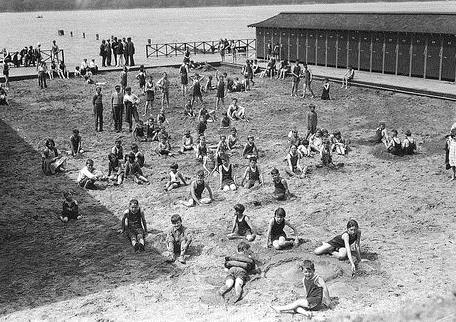Alumnas en prácticas de la Facultad de Traducción e Interpretación de la ULPGC harán la interpretación de las charlas que ofrece esta semana Maria-Adamantia Efrastiou (Universidad del Egeo, Grecia) en Ciencia compartida
- Compartir en Linkedin
- Compartir en Facebook
- Compartir en las redes:
 Maria-Adamantia Eftrastiou (Assistant professor, Department of Marine Sciences, University of the Aegean, Greece), imparte esta semana dos charlas en Ciencia compartida en la Facultad de Ciencias del Mar, a las 12:30:
Maria-Adamantia Eftrastiou (Assistant professor, Department of Marine Sciences, University of the Aegean, Greece), imparte esta semana dos charlas en Ciencia compartida en la Facultad de Ciencias del Mar, a las 12:30:
Martes 17: Lab-on-a-chip: the future in water quality detection.
Jueves 19: Beach Profiles: Complying with the EU Directive
Las alumnas en prácticas de la Facultad de Traducción e Interpretación, Estíbaliz López-Leiton Trujillo, Danaide Rodríguez Hernández y Esther Ramírez Millares, serán las que hagan la interpretación de estas charlas. Comenzamos un nuevo proyecto dentro de Ciencia compartida con la traducción e interpretación de las charlas que se imparten.
La investigadora ha sido invitada por la profesora del Departamento de Biología Pilar García Jiménez a quien agradecemos su indispensable coordinación.
Beach Profiles: Complying with the EU Directive: The Water Framework Directive (2000) established a new, integrated approach to the protection, improvement and sustainable use of Europe’s water environment. The new Bathing Water Directive came into force in 2006, translated into national law by the European Union member states, is the key mechanism for ensuring integrated management of recreational bathing waters. This new Directive introduces a different classification system and different beach quality standards, putting emphasis in the overall quality of the beach, encouraging public participation and providing information to the public, particularly on the risks that bathers may face from pollution. Integral part of the new Directive is the concept of the Bathing Water Profile, which provides information about the bathing beach, enabling the citizens to compare beaches and choose the ones suitable for their needs. Bathing Water Profile is a "management plan" for the bathing water which consists of: description of the current condition of the water environment (map and/or photograph included); identification of where current or historic activities are adversely affecting the quality of the water environment and the biodiversity it supports; description of the actions required to ensure water quality, and to maintain quality where they already meet the standards; setting out the actions needed to deliver environmental improvements whilst trying to achieve a balance between protection of the water environment, sustainable economic development and the protection of the interests of those who depend on that water body for their quality of life; information on reporting and responding to any pollution incidents; local contact details for sources of further information.
The 2006 Bathing Water Directive allowed a substantial period of time for the EU members to bring into force the laws, regulations and administrative provisions necessary to comply with this Directive (by 2008). Another 3 years were allowed to establish bathing water profiles for the first time (by 2011). By the end of 2014 member states were obliged to submit written observations to the Commission on the implementation of the Directive. The Commission shall, no later than 2020, review this Directive with particular regard to the parameters for bathing water quality, including whether it would be appropriate to phase out the ‘sufficient’ classification or modify the applicable standards. Member states notify the Commission annually before the start of the bathing season of all waters identified as bathing waters, including the reason for any change compared to the preceding year. Detailed information about each designated beach is made available via the Internet.
Lab-on-a-chip is the apparatus that can perform one or more laboratory analyses utilizing an electronic chip of a few square millimeters or centimeters. The full term is ‘microelectromechanical system’. Other terms used are ‘Micro Total Analysis Systems’ and “Microfluidics”. In microbiology these systems combine molecular techniques with electronic sensors. Major advantages are that they allow microbiological tests in situ (out in the field), use small amount of test material (water) and give immediate readings. They should offer, additionally small operating costs, sensitivity, good performance in harsh conditions and simplicity in function.
One group of these instruments are Peptide Nanotubes. These are covered with antibodies and have low detection levels. Biosensors detect ATP and metabolic byproducts. Microfluidic biosensors use fluorescence to detect pathogenic microorganisms and viruses. Microhydrodynamic detectors can differentiate microorganisms by their size or even shape. Micro-PCR techniques allow for the molecular detection of microorganisms to take place in a portable apparatus with great reduction in the required time. CryptoDetect card can detect cryptococci in an instrument the size of a credit card.
Research in the area of microapparatuses for microbiological analyses is progressing rapidly. Modern demand for Drinking Water Safety Plans requires systematic monitoring of water quality from the source to the tap. Recreational water quality is another area of potential applications. Several firms are marketing such instruments, and the future has a lot to promise for the benefit of Public Health.
